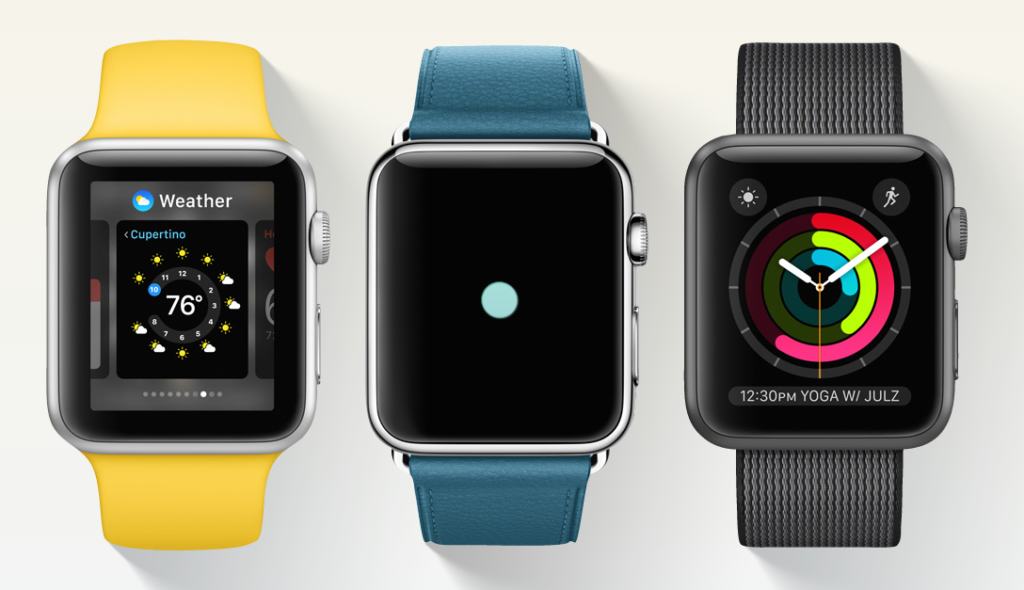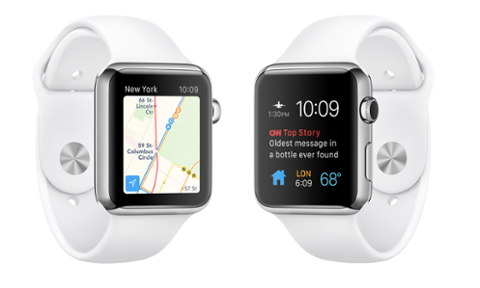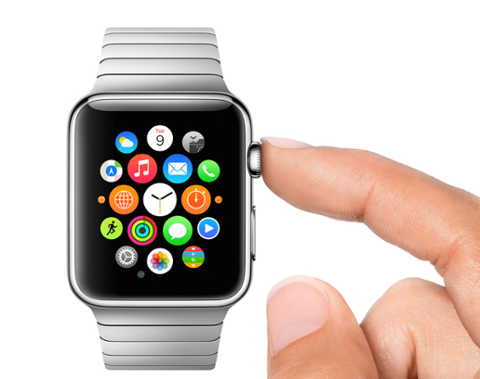 Even before the Apple Watch made its debut in early 2015, developers and analysts debated whether smartwatches would take off as a category. Many in the tech community thought that smartwatches would see mainstream adoption once developers began building lots of apps for the platform. After all, that’s how things worked with smartphones and tablets. But as it turned out, software wasn’t the only reason that users strapped a mini-computer to their wrist: even as the Apple Watch shipped millions of units, specialized wearables such as Fitbit continued to hold their own in terms of market-share, despite a lack of apps. Because the Apple Watch failed to crush the entire wearables market within a quarter or two of its debut, analysts and pundits began to publish a steady cadence of articles insisting that the device was a failure. It was too slow, some suggested, and too unfashionable. It lacked a “killer app” that would drive adoption. Apple needed to redesign some core elements. And so on. Now Apple seems to be pushing back: watchOS 3.0, the latest version of the Apple Watch operating system, made its debut at Apple’s Worldwide Developers Conference (WWDC) in San Francisco this week. There are a lot of goodies here for developers, most notably the Dock, a new interface that allows users to quickly access favored apps. In many ways, it’s reminiscent of the app dock on the iPhone, and that’s almost certainly by design. When the Apple Watch made its debut, many users (not to mention developers) complained about the software’s relative slowness. WatchOS 3.0 attempts to counter that by updating apps in the background, so they spring to life instantly when activated. Apple claims that apps will launch “seven times faster” in watchOS 3.0 than watchOS 2.0, but it remains to be seen whether that statement is hyperbole. In a bid to compete more robustly against FitBit, watchOS 3.0 also offers the ability to measure your physical activity against that of your friends and colleagues. Another fitness-related app, Breathe, is meant to help kill stress by asking the user to focus on breathing. In addition, watchOS 3.0 features slight adjustments to messaging (you can scrawl letters on the screen that automatically translate into type) and UX (new watch-faces, accessible via a simple swipe). But will speedier apps and some other adjustments convince more developers to build for the platform (and consumers to buy the Watch)? Apple hopes the answer to that question is “yes.”
Even before the Apple Watch made its debut in early 2015, developers and analysts debated whether smartwatches would take off as a category. Many in the tech community thought that smartwatches would see mainstream adoption once developers began building lots of apps for the platform. After all, that’s how things worked with smartphones and tablets. But as it turned out, software wasn’t the only reason that users strapped a mini-computer to their wrist: even as the Apple Watch shipped millions of units, specialized wearables such as Fitbit continued to hold their own in terms of market-share, despite a lack of apps. Because the Apple Watch failed to crush the entire wearables market within a quarter or two of its debut, analysts and pundits began to publish a steady cadence of articles insisting that the device was a failure. It was too slow, some suggested, and too unfashionable. It lacked a “killer app” that would drive adoption. Apple needed to redesign some core elements. And so on. Now Apple seems to be pushing back: watchOS 3.0, the latest version of the Apple Watch operating system, made its debut at Apple’s Worldwide Developers Conference (WWDC) in San Francisco this week. There are a lot of goodies here for developers, most notably the Dock, a new interface that allows users to quickly access favored apps. In many ways, it’s reminiscent of the app dock on the iPhone, and that’s almost certainly by design. When the Apple Watch made its debut, many users (not to mention developers) complained about the software’s relative slowness. WatchOS 3.0 attempts to counter that by updating apps in the background, so they spring to life instantly when activated. Apple claims that apps will launch “seven times faster” in watchOS 3.0 than watchOS 2.0, but it remains to be seen whether that statement is hyperbole. In a bid to compete more robustly against FitBit, watchOS 3.0 also offers the ability to measure your physical activity against that of your friends and colleagues. Another fitness-related app, Breathe, is meant to help kill stress by asking the user to focus on breathing. In addition, watchOS 3.0 features slight adjustments to messaging (you can scrawl letters on the screen that automatically translate into type) and UX (new watch-faces, accessible via a simple swipe). But will speedier apps and some other adjustments convince more developers to build for the platform (and consumers to buy the Watch)? Apple hopes the answer to that question is “yes.” WatchOS 3 Tries Apple Watch Reset
 Even before the Apple Watch made its debut in early 2015, developers and analysts debated whether smartwatches would take off as a category. Many in the tech community thought that smartwatches would see mainstream adoption once developers began building lots of apps for the platform. After all, that’s how things worked with smartphones and tablets. But as it turned out, software wasn’t the only reason that users strapped a mini-computer to their wrist: even as the Apple Watch shipped millions of units, specialized wearables such as Fitbit continued to hold their own in terms of market-share, despite a lack of apps. Because the Apple Watch failed to crush the entire wearables market within a quarter or two of its debut, analysts and pundits began to publish a steady cadence of articles insisting that the device was a failure. It was too slow, some suggested, and too unfashionable. It lacked a “killer app” that would drive adoption. Apple needed to redesign some core elements. And so on. Now Apple seems to be pushing back: watchOS 3.0, the latest version of the Apple Watch operating system, made its debut at Apple’s Worldwide Developers Conference (WWDC) in San Francisco this week. There are a lot of goodies here for developers, most notably the Dock, a new interface that allows users to quickly access favored apps. In many ways, it’s reminiscent of the app dock on the iPhone, and that’s almost certainly by design. When the Apple Watch made its debut, many users (not to mention developers) complained about the software’s relative slowness. WatchOS 3.0 attempts to counter that by updating apps in the background, so they spring to life instantly when activated. Apple claims that apps will launch “seven times faster” in watchOS 3.0 than watchOS 2.0, but it remains to be seen whether that statement is hyperbole. In a bid to compete more robustly against FitBit, watchOS 3.0 also offers the ability to measure your physical activity against that of your friends and colleagues. Another fitness-related app, Breathe, is meant to help kill stress by asking the user to focus on breathing. In addition, watchOS 3.0 features slight adjustments to messaging (you can scrawl letters on the screen that automatically translate into type) and UX (new watch-faces, accessible via a simple swipe). But will speedier apps and some other adjustments convince more developers to build for the platform (and consumers to buy the Watch)? Apple hopes the answer to that question is “yes.”
Even before the Apple Watch made its debut in early 2015, developers and analysts debated whether smartwatches would take off as a category. Many in the tech community thought that smartwatches would see mainstream adoption once developers began building lots of apps for the platform. After all, that’s how things worked with smartphones and tablets. But as it turned out, software wasn’t the only reason that users strapped a mini-computer to their wrist: even as the Apple Watch shipped millions of units, specialized wearables such as Fitbit continued to hold their own in terms of market-share, despite a lack of apps. Because the Apple Watch failed to crush the entire wearables market within a quarter or two of its debut, analysts and pundits began to publish a steady cadence of articles insisting that the device was a failure. It was too slow, some suggested, and too unfashionable. It lacked a “killer app” that would drive adoption. Apple needed to redesign some core elements. And so on. Now Apple seems to be pushing back: watchOS 3.0, the latest version of the Apple Watch operating system, made its debut at Apple’s Worldwide Developers Conference (WWDC) in San Francisco this week. There are a lot of goodies here for developers, most notably the Dock, a new interface that allows users to quickly access favored apps. In many ways, it’s reminiscent of the app dock on the iPhone, and that’s almost certainly by design. When the Apple Watch made its debut, many users (not to mention developers) complained about the software’s relative slowness. WatchOS 3.0 attempts to counter that by updating apps in the background, so they spring to life instantly when activated. Apple claims that apps will launch “seven times faster” in watchOS 3.0 than watchOS 2.0, but it remains to be seen whether that statement is hyperbole. In a bid to compete more robustly against FitBit, watchOS 3.0 also offers the ability to measure your physical activity against that of your friends and colleagues. Another fitness-related app, Breathe, is meant to help kill stress by asking the user to focus on breathing. In addition, watchOS 3.0 features slight adjustments to messaging (you can scrawl letters on the screen that automatically translate into type) and UX (new watch-faces, accessible via a simple swipe). But will speedier apps and some other adjustments convince more developers to build for the platform (and consumers to buy the Watch)? Apple hopes the answer to that question is “yes.” 

